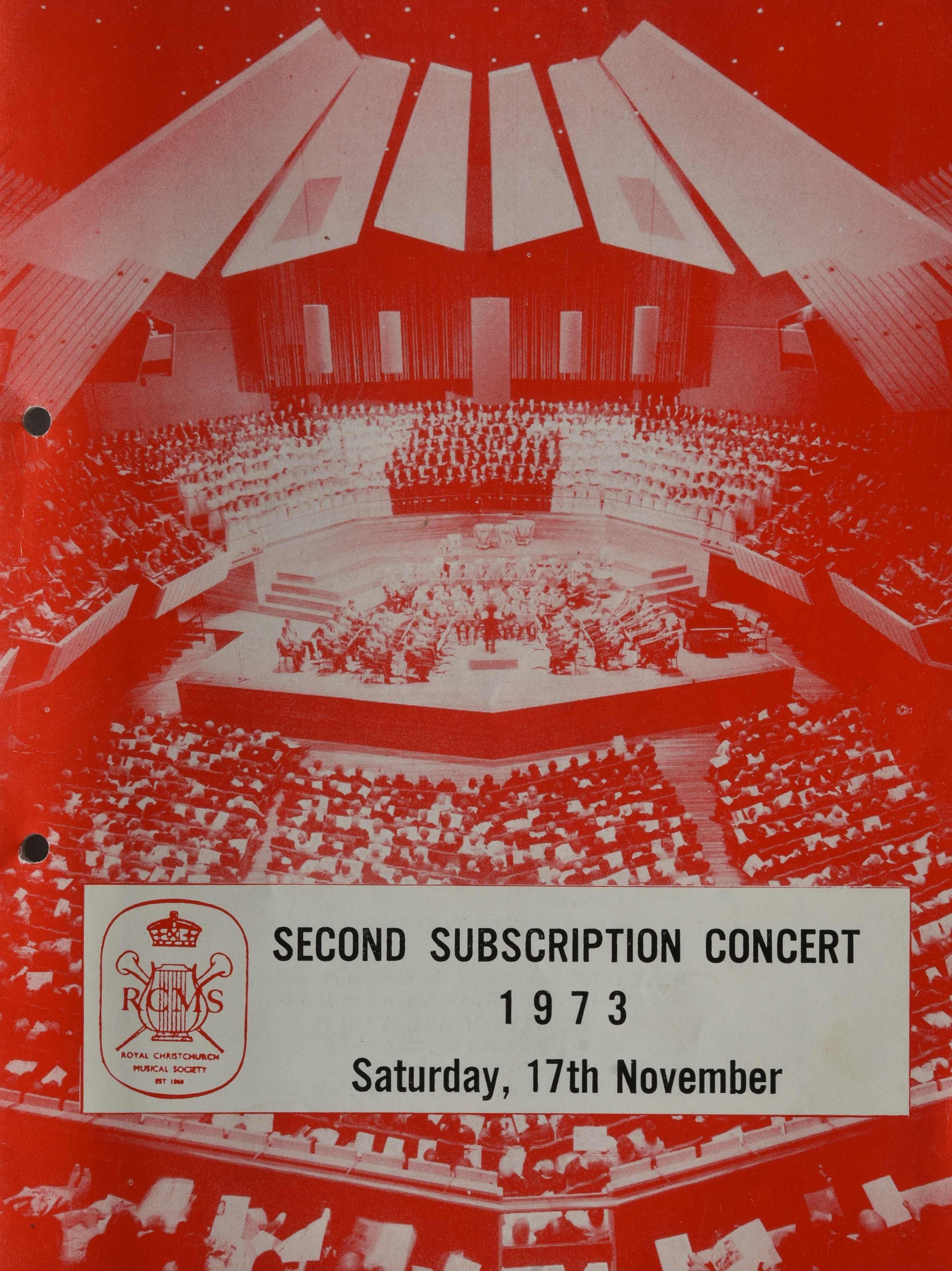Christchurch Town Hall opening 30th September 1972.
In the Christchurch Star dated 2nd October 1972, Miles Warren, one of the architects of the Christchurch Town Hall states that the ‘thing that delighted him most was that although there were 2500 people in the audience one never felt far from the action. There had been a lot of comment from people about the intimate quality of the auditorium’. Miles Warren said ‘Noises from coughs and rattling of sweet packets were a product of good acoustics. He carried on to say ‘even the slightest movement on stage would produce a fairly audible noise’.
There were several musical items at the opening ceremony – a brass band, the Christchurch Cathedral Choristers sang a traditional echo yodel and Mozart’s Alleluia, the Christchurch Liedertafel sang “Laugh and be Merry” by Professor Vernon Griffiths and “Onward Ye Peoples” by Sibelius and at the end of the opening ceremony the Christchurch Harmonic Society sand “Now we Thank we all our God” and “God Defend New Zealand”.
There is a lovely story about an 81-year-old in the Christchurch Star dated 2nd October 1972 who, as a schoolboy, sang at the opening of the Wellington Town Hall opening in 1905. He had travelled from Wellington to hear his daughter sing in the Royal Christchurch Musical Society choir at the inaugural concert.
According to The Press dated 2nd October 1972, the members of the Christchurch Cathedral Society of Bellringers rang a quarter peal of Grandsire Triples (1260 changes in 48 minutes) for the first visit to Christchurch of the Sir Denis Blundell and for the opening of the Town Hall.
The Press of 2nd October 1972 has a lengthy summary about the first concert in the Christchurch Town Hall. Professor Ritchie composed a fanfare for the concert. The Canterbury Representative Brass Band played a “Prelude for an Occasion” by Edward Gregson. The article states ‘Sir Arthur Bliss’ suite “Kenilworth” told its tael of the days of Elizabeth I in charming music, admirably suited to the requirements of a brass band, while Beethoven’s “Creation Hymn” gave us lovely sonorities which seemed to delight the Town Hall’s wonderful acoustics”.
The article continues by saying “all the music performed during the day showed how this hall will markedly favour our performers who co-operate with is sensitive acoustical conditions and may be sticky with those who do no. The acoustics are wonderful, and will long be studied with great interest – by those who will use the hall, and the world who will be interested to ascertain how such clear results have been obtained”.
Another work was specially commissioned for the opening, it was written by Eric Ball and called “A Christchurch Cantata”. This work was summed up as follows “the cantata is not a work which harmonically is likely to set ablaze rivers adjacent to the great academies, but it is interesting in showing how useful a brass band can be as an accompaniment to voices. The band certainly had the fat of the performance and played with effective colour and expressive detail. The choir sang with careful response, but some parts might have been more telling had more time been available for closer acquaintance with the music”.
The reviewer stated that the playing by the Christchurch Civic Orchestra that “apart from occasional lack of strict cohesion and rhythm and in grading of expression, it was a good performance”.
Maurice Till provided a “refreshing, joyous performance” of Beethoven’s Choral Fantasia. It was the first time that the Keith Newson memorial Steinway grand piano was used and “the piano sounded so clearly that it and the hall seemed to be old friends”. The article states “in an eminently satisfying performance, Mr Hawkey drew from the choir, tonal qualities which suited the building. Unforced, firm, and steady tone, with the carrying power which forward production ensures, made the choir’s work lively and supple. The phrasing was clean and well-shaped. Clarity of words was not always achieved. Mr Till’s expressive tonal liveliness in the long piano introduction seemed to set the atmosphere for a unifi4ed and happy performance. The orchestra played with finesse”.













